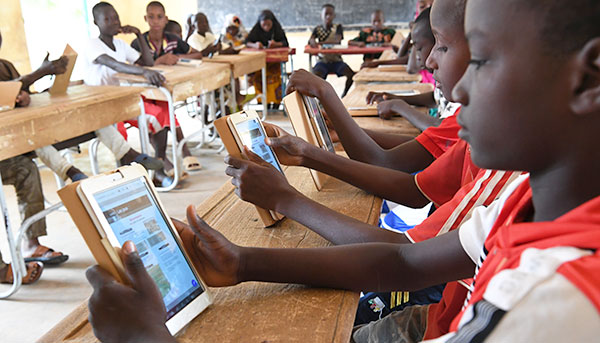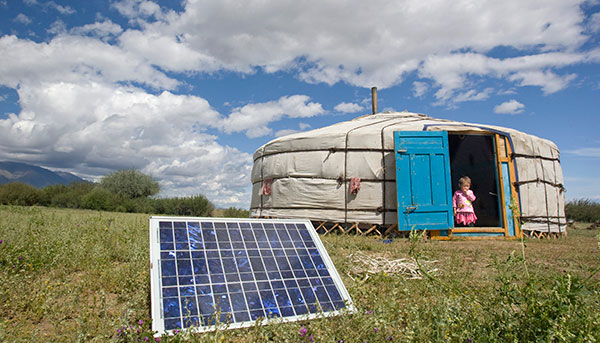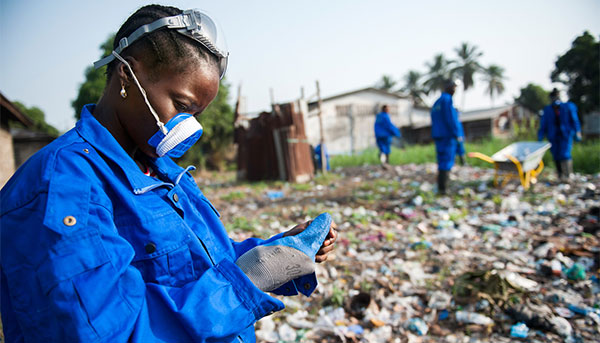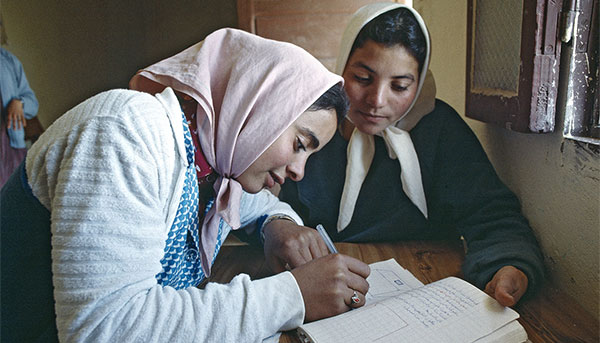
Issue Briefs
To help frame and inspire your dialogues read some of our Issue Briefs which outline issues such as the climate crisis, inequality, new forms of conflict and violence, and the rapid changes in demography and digital technologies. These issues will all require effective cooperation across borders, sectors, and generations.
The United Nations wants to gather diverse perspectives and creative ideas on what is needed to address these emerging risks and opportunities. How can we collectively navigate the gap between the future we need and where we are headed, if these mega-trends continue?
The Impact of Digital Technologies
Technologies can help make our world fairer, more peaceful, and more just. Digital advances can support and accelerate achievement of each of the 17 Sustainable Development Goals – from ending extreme poverty to reducing maternal and infant mortality, promoting sustainable farming and decent work, and achieving universal literacy. But technologies can also threaten privacy, erode security and fuel inequality. They have implications for human rights and human agency. Like generations before, we – governments, businesses and individuals – have a choice to make in how we harness and manage new technologies.
A New Era of Conflict and Violence
The nature of conflict and violence has transformed substantially since the UN was founded 75 years ago. Conflicts now tend to be less deadly and often waged between domestic groups rather than states. Homicides are becoming more frequent in some parts of the world, while gender-based attacks are increasing globally. The long-term impact on development of inter-personal violence, including violence against children, is also more widely recognized.
Separately, technological advances have raised concerns about lethal autonomous weapons and cyberattacks, the weaponization of bots and drones, and the livestreaming of extremist attacks. There has also been a rise in criminal activity involving data hacks and ransomware, for example. Meanwhile, international cooperation is under strain, diminishing global potential for the prevention and resolution of conflict and violence in all forms.
Inequality – Bridging the Divide
Today, wherever people live, they don’t have to look far to confront inequalities. Inequality in its various forms is an issue that will define our time. Confronting inequalities has moved to the forefront of many global policy debates as a consensus has emerged that all should enjoy equal access to opportunity. ‘Leave no one behind’ serves as the rallying cry of the 2030 Agenda for Sustainable Development.
Overall, since the 1990s total global inequality (inequality across all individuals in the world) declined for the first time since the 1820s. Reinforcing this trend, we have mostly seen income inequality between countries decline. Yet income inequality within countries has risen, this is the form of inequality people feel on a daily basis.
Inequalities are not only driven and measured by income, but are determined by other factors - gender, age, origin, ethnicity, disability, sexual orientation, class, and religion. These factors determine inequalities of opportunity which continue to persist, within and between countries. In some parts of the world, these divides are becoming more pronounced. Meanwhile, gaps in newer areas, such as access to online and mobile technologies, are emerging. The result is a complex mix of internal and external challenges that will continue to grow over the next twenty-five years.
The Climate Crisis – A Race We Can Win
Climate change is the defining crisis of our time and it is happening even more quickly than we feared. But we are far from powerless in the face of this global threat. As Secretary-General António Guterres pointed out in September, “the climate emergency is a race we are losing, but it is a race we can win”.
No corner of the globe is immune from the devastating consequences of climate change. Rising temperatures are fueling environmental degradation, natural disasters, weather extremes, food and water insecurity, economic disruption, conflict and terrorism. Sea levels are rising, the Arctic is melting, coral reefs are dying, oceans are acidifying, and forests are burning. It is clear that business as usual is not good enough. As the infinite cost of climate change reaches irreversible highs, now is the time for bold collective action.
Shifting Demographics
The world’s population is expected to increase by two billion people, from 7.7 billion at present to 9.7 billion in 2050, before reaching a peak of nearly 11 billion by the end of the century as fertility rates continue to decline. During this period, the global population is projected to become more and more urban, while children below age 5 will be outnumbered by persons aged 65 or above.
Half of global population growth between now and 2050 is expected to come from just nine countries: India, Nigeria, Pakistan, the Democratic Republic of the Congo, Ethiopia, Tanzania, Indonesia, Egypt and the United States of America (in descending order of increase). The population of Sub-Saharan Africa is likely to double, while the population of Europe is likely to shrink.
Meanwhile, people are on the move. While the percentage of international migrants has remained around 3 per cent of the global population over the past two decades, their number has increased by more than half since 2000. At the same time, the number of people forced to flee their homes has risen sharply due to protracted conflicts and could increase further due to climate change and environmental degradation. The vast majority of refugee and migrant flow are to countries in the global South.
Investing in Health for an Equitable Future
Good health is a fundamental human right and a pillar of economic opportunity, yet for too many people around the world it is elusive. While significant strides have been made, such as in increasing life expectancy, progress has been unjustly uneven. Today, we are at a sticking point – those within reach have realized the benefits of evolving technologies and care in health, yet the global community is struggling to reach the most vulnerable among us.
For example, access to sexual, reproductive, and child health care services is improving and since 2000, maternal mortality has fallen by 37 per cent. However, the maternal mortality ratio, the proportion of mothers that do not survive childbirth compared to those who do, in developing regions is still 14 times higher than in the developed regions. Health service coverage is also lower among women living in poverty and in rural areas.
Meanwhile, today the world faces growing threats that could undermine hard-won gains and create additional headwinds toward achieving Sustainable Development Goal 3 (SDG 3). Evolving trends in climate, demographics, urbanization, and technology are impacting disease patterns, care, treatment, and health systems. On top of this, countries are not yet investing enough resources in core health priorities and systems, especially primary healthcare. To reach the targets of SDG 3, “ensure healthy lives and promote well-being for all at all ages” by 2030 we must all accelerate progress today.
Women and Girls – Closing the Gender Gap
Equality between men and women was a core tenet enshrined in the UN Charter in 1945. Yet, 75 years later, women and girls live in a world of widespread gender inequality. Turning this around is a priority of the UN in 2020 which also marks the 25th anniversary of the Beijing Declaration and Platform for Action; the 20th anniversary of Security Council resolution 1325 on Women, Peace, and Security; and the 5th anniversary of the Sustainable Development Goals. The 2030 Agenda is clear: Gender equality and the empowerment of all women and girls is a goal in itself (Sustainable Development Goal 5) as well as a catalyst for the achievement of all the other goals. Ultimately, development will only be sustainable if its benefits accrue equally to both women and men. The world has a decade left to turn this promise into action.
The past decades have seen important progress for women and girls. Overall, however, change has been uneven and incremental. At the current rate of change, the global gender gap will not close for another 100 years. As the Secretary-General warned, “change is coming at a pace that is too slow for the women and girls whose lives depend on it”. Over the next 10 years, the global community must act with urgency and determination to accelerate progress and achieve gender equality for all women and girls everywhere.







